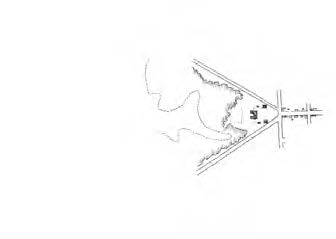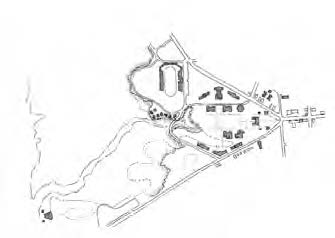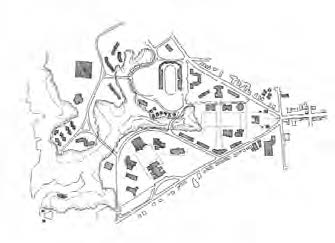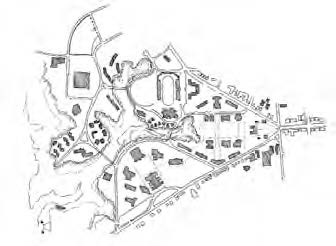Historical Overview
Development History
The underlying concept of these guidelines is informed by historical context as well as by the planning and design precedents established over the history of the university's development.
1693 – 1920: W&M and City Designed
 William & Mary was founded in 1693 on 330 acres of land at Middle Plantation, soon to be known as Williamsburg, which became the capital of Virginia in 1699. Construction on the Wren Building began soon after. In following decades, the Brafferton and President's House were built to flank the main building.
William & Mary was founded in 1693 on 330 acres of land at Middle Plantation, soon to be known as Williamsburg, which became the capital of Virginia in 1699. Construction on the Wren Building began soon after. In following decades, the Brafferton and President's House were built to flank the main building.
Campus historian Louise Kale notes that the arrangement of these buildings on a green formed the beginnings of a distinctly American concept—the college campus. Rather than enclose a courtyard, as at the colleges of Oxford and Cambridge, the yard formed by these three buildings was open toward Williamsburg.
When the City of Williamsburg was laid out in 1699, William & Mary played a vital role: anchoring the west end of the Duke of Gloucester Street. The Capital Building was constructed at the east end of the Duke of Gloucester Street. Thus, W&M had an integral role in the planning and urban design of the city. Through its first two hundred years, William & Mary remained small, and at times, struggled to survive as a private college in a small town. In 1906, as the university received support from the Commonwealth of Virginia, its fortunes began to change.
1920 – 1950: From Court to Campus
 The first comprehensive plan for the university was developed by Richmond architect Charles Robinson and landscape architect Charles Gillette in the early 1920s. This plan, based on the design of the Chelsea Hospital in England, resulted in a campus plan of buildings in a three-sided quadrangle, opening up to a green lawn— Gillette's Sunken Garden.
The first comprehensive plan for the university was developed by Richmond architect Charles Robinson and landscape architect Charles Gillette in the early 1920s. This plan, based on the design of the Chelsea Hospital in England, resulted in a campus plan of buildings in a three-sided quadrangle, opening up to a green lawn— Gillette's Sunken Garden.
This strong landscape center and diamond-shaped campus organization strengthened the axis created by the Wren Building and provided a fine view of the countryside to the west—a view later to become known as the Jefferson Prospect. The buildings from this period are of similar size and scale, and employ materials similar to those of the Wren Building . Their placement around the Sunken Garden reinforces the Wren Building 's place in the hierarchy of campus life.
1950 – 1980: Buildings as Objects
 The 1960s saw the spread of the campus to the west across the ravine, with academic buildings in the New Campus and residential halls in the Far West Campus. Like many American campuses in the 1960s, the new architecture was based on modern principles, rejecting traditional references and context in favor of a more universal building language of modern materials, form, and construction.
The 1960s saw the spread of the campus to the west across the ravine, with academic buildings in the New Campus and residential halls in the Far West Campus. Like many American campuses in the 1960s, the new architecture was based on modern principles, rejecting traditional references and context in favor of a more universal building language of modern materials, form, and construction.
The student residences and campus life facilities were separated from the new academic campus and located further to the west within the woods. By 1980, the physical campus had spread remarkably, with buildings designed more as isolated objects in the landscape and less with the development of the campus in mind. New roads, notably Campus Drive and Landrum Drive , were created to bring automobiles to these different areas of the university.
The university began to have three distinct and unconnected identities: the historic core of Robinson's plan, the New Campus, and the Far West Campus.
1980 – 2002: Strategic Infill
 In recent decades, the university developed several new buildings: McGlothlin-Street Hall on the Old Campus, the University Center to the south of the stadium, and the Recreational Sports Center west of William & Mary Hall.
In recent decades, the university developed several new buildings: McGlothlin-Street Hall on the Old Campus, the University Center to the south of the stadium, and the Recreational Sports Center west of William & Mary Hall.
In general, the placement of these buildings has followed the principles of the 1987 master plan and strengthened the core campus, but little has been done to reconnect the separate parts of the campus.














